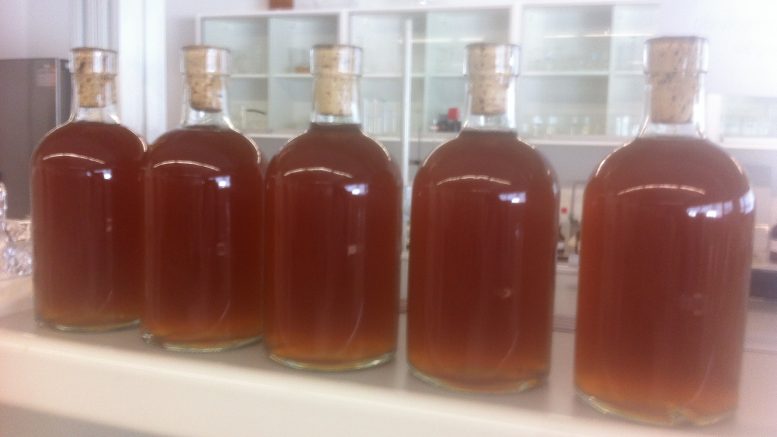Prediction Power and Accuracy of Forced Ageing – Matching Sensory and Analytical Results for Lager Beer
F. Lehnhardt, J. Steiner, M. Gastl and T. Becker
BrewingScience. May / June 2018 (Vol. 71). DOI: 10.23763/BrSc18-05lehnhardt
For those who care about the aging (expiration date) of their beers. Work by BGT colleagues of Weihenstephan demonstrates the similarities and differences between natural (up to 17 months at 20ºC) and forced (up to 9 days at 40º) beer aging.
Stands out
- Forced aging for 4 days at 40°C was able to predict natural aging by 3 to 5 months, however, 4 days of forced aging were not able to satisfactorily predict all aging indicators.
- There was sensory difference between aging processes.
- By gas chromatography – olfactometry (GC-O) technique it was possible to determine if the samples were aged, however, it was not possible to predict the degree of aging.
- 4 days of forced aging were not able to satisfactorily predict all aging indicators. However, some indicators have increased linearly in the aging process and therefore have the potential to be used in Lager (German Helles and German Pilsner) aging prediction models.
Abstract
The most common way to predict the shelf life and sensory stability of lager beer is via forced ageing at elevated temperature (40 °C). However, practical results often indicate that forced ageing alters the flavour profile unlike natural ageing. To assess the prediction power of forced ageing using both sensorial and analytical approaches, a lager and a pilsner beer were stored for up to 17 months at 20 °C (natural ageing) and at 40 °C for up to 9 days (forced ageing). The beers were tested by sensory analyses (DLG 5-Point Scheme [Deutsche Landwirtschafts–Gesellschaft e. V], acceptancy, and ageing descriptors). In addition, volatile compounds were measured by solid-phase microextraction (SPME) after on-fibre derivatization with o-(2,3,4,5,6-pentafluorobenzyl)hydroxylamine (PFBHA). Based on (i) sensory analyses (DLG rating and acceptancy test) and (ii) the sum of analytical ageing indicators, it was shown that forced ageing over 4 days at 40 °C was able to well predict natural ageing of 3–5 months. Quantitative descriptive analysis (QDA) revealed a difference in the aroma profile of the two ageing processes. Furthermore, it was found that gas chromatography–olfactometry (GC-O) was able to determine whether samples were aged; although it was not suitable for the prediction of the degree of ageing. Between natural and forced ageing, no clear correlation between the detected aroma active indicators was found. Principal components analysis (PCA) of chosen ageing compounds (i.e., their tendency to increase linearly with ageing) revealed that 4 days of forced ageing was not able to satisfactorily predict all ageing indicators. Nevertheless, some indicators increased linearly in both ageing processes and so could be used for prediction. Therefore, breweries should be aware of the sensory and analytical discrepancies between forced and natural ageing and should critically reconcile the different prediction methods.


Be the first to comment on "Prediction Power and Accuracy of Forced Ageing – Matching Sensory and Analytical Results for Lager Beer"